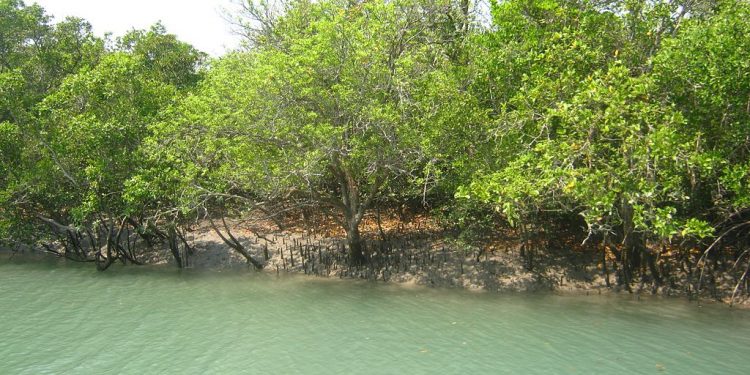Kendrapara: Absence of special allocation of funds under the Mangrove Initiative for Shoreline Habitats & Tangible Income (MISHTI) scheme announced in the Union Budget for the 2023-24 financial year and reduction in National Coastal Mission (NCM) fund allocation in Budget will do more harm than good for the mangrove forests which are known as the protective wall against calamities. Union Finance Minister Nirmala Sitharaman while presenting the Budget February 1, spoke about the benefits and utility of mangrove forests and announced the MISHTI scheme.
However, the minuscule fund allocation under the scheme has raised question marks. Researchers Khitish Kumar Singh, Devi Prasad Sahu, Sarat Kumar Sahu, environmentalists Hemant Kumar Rout and Ashok Kumar Swain apprehend that if sufficient funds are not made available under the scheme then the mangrove forests in Kendrapara district would face destruction and subsequently natural calamities will bring extensive damage. They said that the Budget will impact the protection of mangrove forest in Bhitarkanika wetland. This wetland, spread in an area of 672 sq km, has 209.25 sq km of mangrove forest cover by 2019. The mangrove forest here is deemed as a protective wall for Kendrapara district and a sanctuary for scores of wild and marine animals. The mangroves house rich bio-diversity and protect the land mass from natural calamities like cyclonic storms, floods and tsunamis.
Union Finance Minister Nirmala Sitharaman said the scheme will be implemented by converging Compensatory Afforestation Fund Management and Planning Authority (CAMPA) funds, Mahatma Gandhi National Rural Employment Guarantee Scheme (MGNREGS), and other sources. In reply to a question on the protection of mangrove forests, the Union Environment, Forest and Climate Change Minister Aswini Kumar Choubey said that a budget will be prepared under the NCM and the new MISHTI scheme has been launched, February 6.
However, the budget in NCM has been reduced. Moreover, no special allocation has been made under MISHTI scheme which is likely to impact the protection of the mangrove forests. The Centre had allocated Rs 27 crore in the 2021-22 FY for the NCM. According to the Indian State of Forest Report-2021, these funds will be used for the protection of mangrove forests spread over 4,992 sq km area and to create more mangrove forests on 7,500 km-long coastlines.
However, the budgetary allocation for the NCM has been reduced to Rs 25 crore in 2022-23 FY while this year it has been reduced to Rs 12.50 crore. While the centre is reducing the budgetary allocation for the NCM, it is also doing the same for MGNREGS. The survival rate of mangroves when grown by sowing seeds is 50 per cent while it is 60 per cent if done through a plantation of saplings. A mangrove tree takes three years to achieve full growth. The protection of mangrove forests has come under question mark as the MGNREGS and CAMPA funds are released annually.
Moreover, the Bhitarkanika wetland is facing an acute shortage of freshwater and the mushrooming of prawn gheries, industries, and intrusion by Bangladeshi nationals has led to pollution, hindering the growth of new forests and destroying the existing forest cover. The coastal erosion has remained unchecked and the low budgetary allocation is all the more likely to impact the existence of Bhitarkanika. When contacted, DFO Sudarshan Gopinath Yadav said that a special nursery has been established for the preparation of mangrove saplings and plantation of saplings and their maintenance is being given the highest priority






































